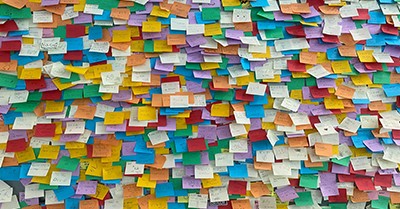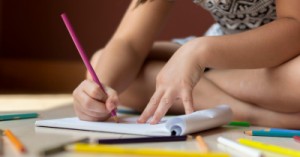A documentation wall is a powerful visual tool used in early childhood settings to showcase children's learning, educator reflections, and connections to curriculum frameworks like the EYLF. It transforms everyday observations into a living, evolving story of growth, identity, and inquiry.
What Is a Documentation Wall?
It’s a dedicated space—often a wall, board, or panel—where educators display:
- Children’s work (art, writing, photos)
- Learning stories and observations
- EYLF outcome links
- Quotes from children and families
- Reflections and provocations
- Project timelines or inquiry maps
How to Design a Documentation Wall
1. Modular Layout
Divide the wall into themed sections:
“What We’re ‘Exploring’” —current inquiry or project
- “Children’s ”Voices”—quotes and conversations
- “Creative ”Expressions”—artwork and constructions
- “EYLF ”Connections”—outcome links and educator reflections
- “Next ”Steps”—provocations or questions to extend learning
2. Visual Storytelling
Use:
- Photos of children in action
- Annotated drawings or transcripts
- Arrows, speech bubbles, and icons to show progression
- Color-coded EYLF tags or symbols
3. Interactive Elements
- Add QR codes linking to digital portfolios or videos
- Include sticky notes for family input
- Use transparent pockets for rotating documentation
4. Cultural & Emotional Resonance
- Include family photos, cultural symbols, and multilingual labels
- Display emotion cards or reflective prompts (e.g., “I felt proud when…”)
Example: Identity & Belonging Wall (EYLF Outcome 1)
| Section | Content |
|---|---|
| “Who We Are” | Self-portraits, family photos, name cards |
| “What We Say” | Quotes from children about their families or interests |
| “What We Do” | Photos of play, group activities, and routines |
| “What We’re Learning” | Educator reflections linked to Outcome 1 |
| “What’s Next?” | Questions like “How do we show kindness?” or “What makes us feel safe?” |
5. Sensory & Symbolic Layers
Introduce tactile and symbolic elements that invite interaction and emotional resonance:
- Textured panels: Felt, wood, or fabric swatches children can touch
- Symbol cards: Icons representing emotions, cultural motifs, or inquiry themes (e.g., a spiral for growth, a flame for curiosity)
- Mini altars or affirmation zones: Small shelves or pockets with affirmations, calming stones, or symbolic objects children choose
6. Artist-in-Residence or Prodigy Showcase
Celebrate creativity and identity through rotating features:
- “Featured Artist”: Highlight a child’s evolving work with a mini bio and creative process notes
- “Fusion Spotlight”: Showcase collaborative art blending cultural styles (e.g., Aboriginal dot painting meets psychedelic swirls)
- “Behind the Creation”: Include sketches, drafts, or voice bubbles explaining the child’s intent
7. Thinking & Wonder Wall
Encourage inquiry and metacognition:
- “I Wonder…” Zone: Children’s questions displayed with space for peer or educator responses
- “Big Ideas” Cloud: A visual map of concepts explored across the term
- “What If…” Prompts: Provocative questions tied to current projects (e.g., “What if trees could talk?”)
8. Documentation Puzzle or Timeline
Make learning visible over time:
- Puzzle pieces: Each week adds a new “piece” showing progress or reflection
- Accordion timeline: A fold-out strip showing inquiry evolution, milestones, and shifts in thinking
- “Then & Now” Frames: Compare early and recent work to show growth
9. Family & Community Echoes
Deepen relational documentation:
- “From Home to Here”: Display artifacts or stories families contribute (recipes, traditions, photos)
- Multilingual “Welcome” wall: Children’s greetings in their home languages
- “Shared Wisdom” Corner: Quotes or advice from elders, community members, or family interviews
10. Educator Reflection & Practice Lens
Make pedagogy transparent and affirming:
- “Why This Matters”: Educator notes on the intent behind provocations or displays
- “Our Learning Moves”: Visuals showing how educators scaffold inquiry (e.g., prompts, setups, questions)
- “Reflective Compass”: A quadrant tool showing emotional, cognitive, social, and cultural reflections
Bonus: Snack & Wellbeing Corner
Blend well-being with documentation:
- “What Fuels Us”: Photos or drawings of favorite snacks, hydration rituals, or calming routines
- “Snack Math”: Visual calorie breakdowns or flavor profiles of fusion snacks children help assemble
- “Mood & Food” Tracker: Children reflect on how different foods make them feel (energized, sleepy, proud)
Further Reading
Blurbs For Wall Displays
Setting Up Displays In An Early Learning Environment
Importance of Displaying Children's Artwork
Guidelines For Documenting In Early Childhood Services
Pedagogical Documentation
Documentation Services Required to Support Quality Area 1
Guidelines For Documenting In Early Childhood Settings
Safe Language in Documentation







 Here is the list of the EYLF Learning Outcomes that you can use as a guide or reference for your documentation and planning. The EYLF
Here is the list of the EYLF Learning Outcomes that you can use as a guide or reference for your documentation and planning. The EYLF The EYLF is a guide which consists of Principles, Practices and 5 main Learning Outcomes along with each of their sub outcomes, based on identity,
The EYLF is a guide which consists of Principles, Practices and 5 main Learning Outcomes along with each of their sub outcomes, based on identity, This is a guide on How to Write a Learning Story. It provides information on What Is A Learning Story, Writing A Learning Story, Sample
This is a guide on How to Write a Learning Story. It provides information on What Is A Learning Story, Writing A Learning Story, Sample One of the most important types of documentation methods that educators needs to be familiar with are “observations”. Observations are crucial for all early childhood
One of the most important types of documentation methods that educators needs to be familiar with are “observations”. Observations are crucial for all early childhood To support children achieve learning outcomes from the EYLF Framework, the following list gives educators examples of how to promote children's learning in each individual
To support children achieve learning outcomes from the EYLF Framework, the following list gives educators examples of how to promote children's learning in each individual Reflective practice is learning from everyday situations and issues and concerns that arise which form part of our daily routine while working in an early
Reflective practice is learning from everyday situations and issues and concerns that arise which form part of our daily routine while working in an early Within Australia, Programming and Planning is reflected and supported by the Early Years Learning Framework. Educators within early childhood settings, use the EYLF to guide
Within Australia, Programming and Planning is reflected and supported by the Early Years Learning Framework. Educators within early childhood settings, use the EYLF to guide When observing children, it's important that we use a range of different observation methods from running records, learning stories to photographs and work samples. Using
When observing children, it's important that we use a range of different observation methods from running records, learning stories to photographs and work samples. Using This is a guide for educators on what to observe under each sub learning outcome from the EYLF Framework, when a child is engaged in
This is a guide for educators on what to observe under each sub learning outcome from the EYLF Framework, when a child is engaged in The Early Years Learning Framework describes the curriculum as “all the interactions, experiences, activities, routines and events, planned and unplanned, that occur in an environment
The Early Years Learning Framework describes the curriculum as “all the interactions, experiences, activities, routines and events, planned and unplanned, that occur in an environment


